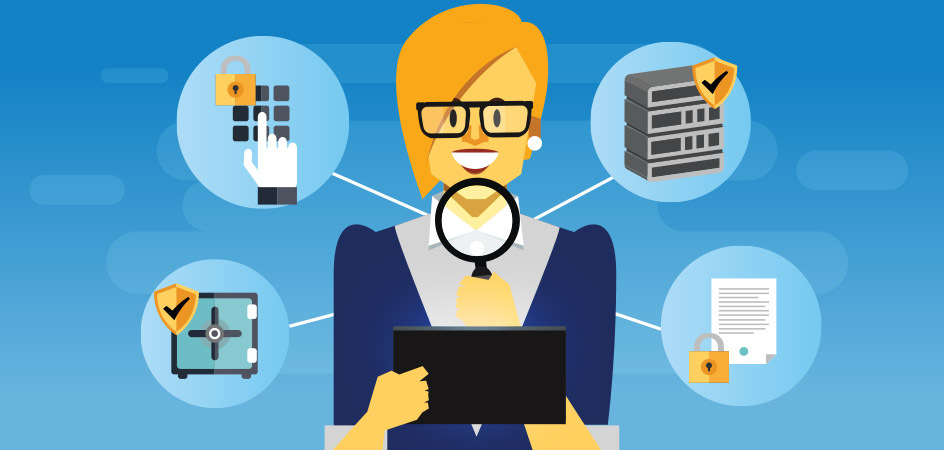
Top Big Data Security Issues You Need to Know Now
Posted by Walid Abou-Halloun Date: Jun 3, 2018 3:21:51 AM
Unless you’ve been living under a rock for the past several years, you’ve heard the buzz about big data. And with all the promise that big data offers comes the rising need for big data security.
Don’t believe it? Data breaches cost companies an average of $3.5 million in 2017. Imagine what hackers could do with millions of data comprised of private customer information.
If you need big data, you also need big data security.
Keep reading to find out what security concerns you should be watching out for.
What is Big Data?
Basically, big data refers to the massive quantity of data derived from traditional and digital sources.
Companies have their own collections of data about their customers, and they use this data to garner insights which will inform key business decisions.
Now, the numbers alone aren’t necessarily valuable, though they certainly can be to someone who knows how to dig what exactly they’re trying to find.
What’s more valuable is the insights you can get from that data, and the private information about your customers that lives within that data.
As such, both for the prosperity of your business and your customers’ trust in your business practices, you need to ensure that the data you have about them stay safe.
What is Big Data Security?
This is where big data security comes into the picture. It can also fall under the realm of cybersecurity, though big data comes with its own specific set of security concerns that cannot be fully addressed by basic cybersecurity.
The obvious example is figuring out how to store such enormous quantities of data in a way that won’t bog down your processing power while still taking the appropriate precautions.
Oh, and your people should also be able to make use of the data within the system in order to make sense of the data.
It’s a tall order. It helps if you have some idea of what you should be guarding and where you should be guarding it.
Big Data Security Issues
Now that you know some of the essentials of big data and big data security, let’s talk about some of the key security issues you should be looking out for in 2018.
While there are all kinds of issues that could challenge your system, we’ve outlined nine major issues that are common concerns and also serious problems that many companies overlook in their security process.
Distributed Frameworks
The appeal of distributed frameworks is understandable. When you’re dealing with millions of data points and your data analytics requires huge processing power, a distributed framework makes your life a lot easier.
Basically, a distributed framework, also called a data distribution service, allows data, events, commands, and related communication to pass between a data publisher and subscribers. This is handy for big data because it allows the data to move and process more efficiently.
Unfortunately, it opens up your system to a host of security issues.
Rather than safeguarding one server, you now have to protect all the servers that are handling your processing. One unprotected or weakened server is all a hacker needs to make your life difficult.
Data Storage
On a similar note is the issue of data storage.
There is a lot of data floating around. In 2012, IBM estimated that 2.5 billion gigabytes of data were generated daily. And that was back in 2012 with a much lower mobile phone saturation.
Basically, you have a lot of data about your customers waiting to be utilised. Your data manager needs a system that will allow your team to access the data and draw insights from it, but they also need a system that can effectively store the data so you aren’t burning processing power.
A storage system is sort of like a locked filing cabinet—as long as you’re the one turning the key and reading your files, all is well. If someone who shouldn’t have the key uses it to read your files, you’re in trouble.
Here’s the thing about data storage: there’s a whole lot of data and it’s just waiting for someone to access it. You need to make sure the right people are accessing it from the right places, which leads us to our next point: network access points.
Network Access Points
While it is tempting to lock up all the data you have in a box no one can access, it won’t jut make any sense. If your own data team can’t access it, then why acquire them in the first place?
As such, you need to have existing access points. You also need to secure these access points with great care.
For an instance, you have to make sure that everyone using the access point is who they claim to be. You must also ensure that the data is encrypted, even within a secure access point. Ideally, this involves a multi-step verification process.
Endpoints
Not to be confused with access points, endpoints are where the data sits until you do something with it. By design, endpoints are a place in the data lake where access is essential—otherwise, you wouldn’t be able to do anything with your data.
If you’re not safeguarding your endpoints, they may be accessible to someone who shouldn’t be able to access them.
For example, if someone got into your system, your data could stop at a point you don’t know about and be corrupted, or not arrive at the right endpoint at all. Alternately, someone could corrupt data at an endpoint you’re using for legitimate purposes.
Real-Time Network Security
Of course, none of your accessibility or security measures will get you very far if you’re not also implementing network security in real time.
Think of it this way: you can put as many locks on a system as you want but if you don’t actually use the locks, it’s not going to help you keep your information safe.
There’s also the fact that your security system is its own stockpile of data. After all, the system is constantly combing through huge amounts of data to make sure your network is secure.
Your network security should be a partnership of technology and humans. While automated checks may produce false positives, you need humans to check and make sure that the system is catching everything it’s supposed to.
Non-Related Data Stores
Let’s say you have someone else’s data stored with yours. Maybe you share a third-party storage provider, or maybe you use the same servers anyway.
Either way, non-related data stores have their own insights and attractions for hackers. As such, someone may breach your security system trying to access the non-related data, and while they weren’t after your data, they still substantially weakened your security system.
This leaves the door open for hackers who are actually interested in your data to slip in and steal the data while you’re not paying attention.
Data Mining
Data mining is how you translate your miles of data into information you can actually use. It’s also a reason why security and big data should go hand-in-hand.
As we’ve noted, data mining is how you turn your data into usable information. That usable information can also reveal a great deal of private information about your customers, which is why it needs to be carefully protected.
Not just from outsiders, insiders may also want to use those insights to make savvy business decisions before you get the change to do so yourself.
Granular Auditing
Audits are sort of a double-edged sword. On one hand, they can help you address various big data security challenges by checking your system for breaches and potential concerns.
On the other, if you’re putting blind faith in your auditing system without making sure it actually catches everything, you’re not actually as prepared for network security threats as you think you are.
And that puts your whole system at risk.
Metadata
Finally, there’s the issue of metadata.
Metadata is the data describing the data. It’s the data your data analytics team will generate in the process of exploring your data to solve a certain problem, and it’s the insights you’ll later use to make key business decisions.
In other words, it’s valuable data. And while you should be spending a lot of time securing your original data, you should spend as much time securing your metadata. After all, the insights derived from it can be just as useful as the original data.
Using Big Data to Grow Your Business
If you want to use big data to benefit your business, it helps to have big data security go along with it. Otherwise, you’re staring down the barrel of a massive, messy, and expensive breach.
The quality of a company’s work is directly tied to the skills of the people who work for them. That’s why it is crucial to seek out the best big data professionals in the business.
Ready to secure your data and move your business into the future? Head to our contact page to get in touch.




